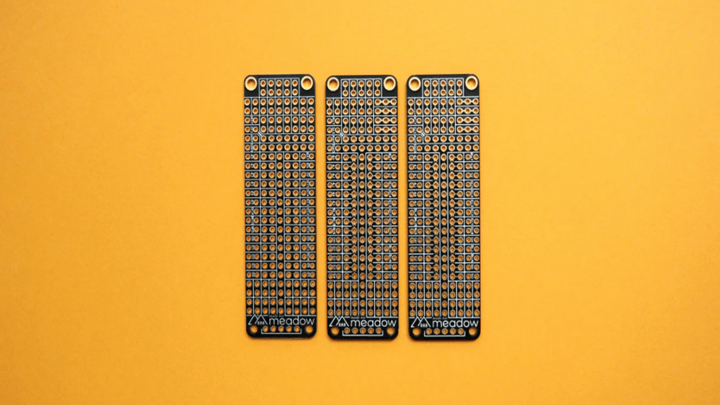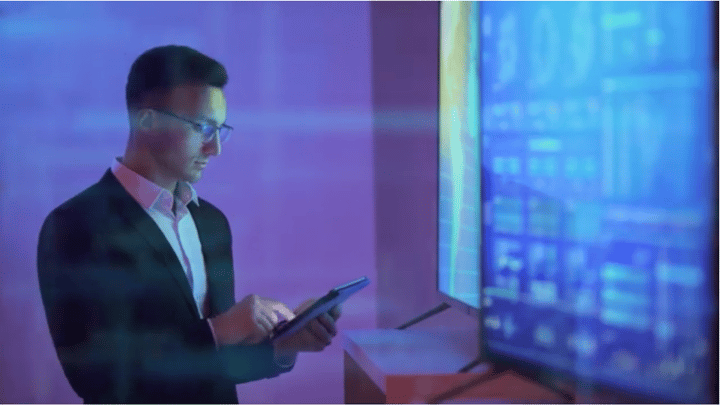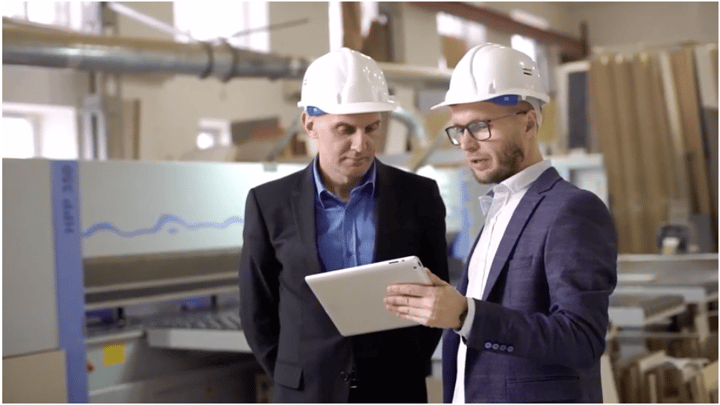Modern professionals have done commendable work of implementing Internet of Things (IoT) devices within their company. But many IoT deployments swiftly hit a stumbling block due to the lack of information ownership and enterprise-wide data access.
ARCHIVE FOR THE ‘internet-of-things’ CATEGORY
Dec 14, 2020 • Features • Digital Transformation • Internet of Things • Data Management • Covid-19 • Teodora Gaici
Modern professionals have done commendable work of implementing Internet of Things (IoT) devices within their company. But many IoT deployments swiftly hit a stumbling block due to the lack of information ownership and enterprise-wide data access.
In a world battered by the COVID-19 outbreak, IoT is expeditiously modernizing data management initiatives.
The pandemic has drawn needed attention to the unintended consequences of pursuing business continuity through fragmented and rigid IT infrastructures. Firms used to clutch at outdated IT assets—but today, they are viewing things in reverse. Despite their previously rosy assessments of legacy IT infrastructures, many companies are now positioning cutting-edge IoT systems as core enablers for ongoing operations. Research confirms this premise, outlining “the growing focus of organizations in reducing operational costs by incorporating advanced tools and techniques that assist in effectively managing the equipment.” The sector’s demand for customized industrial IoT solutions is also growing significantly.
This commitment to prioritize IoT innovation is inevitably igniting a transformation of industry standards and implicitly—data management. As any revolutionizing force, IoT is driving “a significant shift in the requirements for storing and managing data,” according to Gartner analysts—and it strengthens the move to potentially unknown territories, such as “non-relational forms of data persistence that enable high-speed and high-volume data.”
IoT IS EXPEDITIOUSLY MODERNIZING DATA MANAGEMENT INITIATIVES DURING THE PANDEMIC
The lack of IoT standardization prevents industry players from understanding newly emergent requirements for data. It’s often aging and highly inflexible IT system landscapes that hinder a firm’s connectivity needs and real-time data collection—but so is the absence of standardization across the IoT landscape. Beyond the sheer amount of information generated by smart devices, experts not only identify IoT data as being “inherently multi-dimensional and noisy by nature,” but also tremendously perishable. The collection of IoT data can’t, therefore, fit in a traditional database. But without specialized IoT standards, professionals may find it nearly impossible to recognize shifting data requirements.
Another probable reason for not achieving value from IoT deployments is the narrow grip firms currently have on as-built information ownership. As-built data, or in experts’ words, “the information related to the raw parts, materials, and processes to build a product,” is traditionally owned by service managers. More often than not, platform owners and service-providing departments have the right to manipulate the data they are storing; alternatively, they can share a limited amount of information with select users. IoT-related efforts, however, should not only converge on the same data sets; when all aspects of business are enriched with IoT data, the company-wide involvement of stakeholders also becomes crucial. As evidenced by Christian Renaud, Research Director at 451 Research:
“The best data strategies are co-created by stakeholders including the business, the IT department, and the operations team working together.”
This type of reasoning is not foreign to industry players. From finance to research and development to sales and supply chain management, all aspects of business can capitalize on data—but if only a fraction of data is accessed, exchanged, and used wisely, IoT efforts will meet with varying degrees of success.
Many IoT-related impediments are commonly rooted in the restricted ownership of information and the lack of company-wide data access. Therefore, much of the conversation about IoT innovation centers on a fundamental question: Can professionals become custodians of data to patently facilitate the spread of information for greater stakeholder involvement?
There Is Mounting Pressure on Stakeholders To Be Looped In On the Firms IoT Efforts
Efficient data management is among the primary factors that create IoT value for stakeholders. Equally important to veritably meet stakeholder needs is—as argued by the NSW Government IoT Policy Guidance—seeking engagement. But before anything else, it’s essential to consider if the firm’s ”planned data uses [...] deliver value to the community [and provide] transparency and choice around what data is collected and how it will be used.”
As IoT programs aren’t a one-man performance, the IoT Policy Guidance broadly encourages industry players to consult with stakeholders while designing data requirements; one thing is to acknowledge the needs of each stakeholder, and another is to practically factor in their involvement.
An instructive example comes from Bright Wolf. Under the influence of company-wide IoT initiatives, this trusted provider of industrial IoT solutions recently developed Zero Waste Engineering™—a methodology that allows firms to:
- Validate the business case for a broad-gauge IoT strategy;
- Design plans that address the requirements of each stakeholder;
- Create an adaptable data processing system that communicates outcomes to stakeholders.
Another standard procedure for getting stakeholder involvement is to identify a Data Governance Champion—or more precisely, a senior leader that has the ability to “create a steering committee to establish policies [...] around data,” experts say.
Such methods facilitate the flow of data across the firm as they build potent data transmission links between departments while creating trusted networks and demonstrating value—which triggers the company-wide involvement of stakeholders.
To a certain extent, wide-ranging participation in IoT innovation demands revised organizational policies on data management; without an evolving data model that opens access to information, the business is siloed. Yet it’s not always the incapacity of a firm’s leadership to dissolve data barriers that hinders information sharing. Sometimes, permission to access data exists predominantly in pockets.
The Lack of Data Ownership Is Getting Renewed Attention
Having partial ownership of data cripples many efforts at unified IoT strategies—at a minimum, it contributes to the quick proliferation of misinformation across the firm.
It’s not uncommon for organizations to experience a lack of data owners. Remarkably enough, data can be under the exclusive control of the service-providing department (or platform owner)—even if it doesn’t necessarily own the given data.
Still and all, many organizations have managed to assign data owners for their assets—only to restrict enterprise-wide access in order to limit the exposure to security risks. Today, there is a solution to this problem: Blockchain of Things protects data ownership and privacy of end-users. “With proof of ownership and distributed data transactions,” a study reveals, “blockchain technology provides a natural channel for trade between data producers.”
Firms are essentially adjusting to data ownership issues by understanding that it doesn’t always matter who holds title to data; as specialists suggest, a better question to ask now is: “Who can access it?”.
Further Reading:
- Read more about Digital Transformation @ www.fieldservicenews.com/digital-transformation
- Learn more about Copperberg @ www.copperberg.com
- Read more about Data Management @ www.fieldservicenews.com/data-management
- Connect with Teodora Gaici on LinkedIn @ linkedin.com/teodoragaici
- Follow Copperberg on Twitter @ twitter.com/CopperbergAB
Jun 02, 2020 • News • Digital Transformation • Internet of Things • Software AG • Telco • worldwide
Software AG and Tech Mahindra Partner to Deliver Internet of Things (IoT) and analytics innovation for Telco sector accelerating digital transformation and enhance service offerings.The new partnership will see Software AG’s Cumulocity IoT and...
Software AG and Tech Mahindra Partner to Deliver Internet of Things (IoT) and analytics innovation for Telco sector accelerating digital transformation and enhance service offerings.
The new partnership will see Software AG’s Cumulocity IoT and webMethods Integration Platforms integrated with Tech Mahindra’s IoT framework to support telecommunications customers.
Accelerating Digital Transformation in Service
Working together, Software AG and Tech Mahindra will provide Internet of Things (IoT), analytics and integration technologies, services and support. This will enable communications service providers (CSPs) and manufacturers to drive digital transformation efficiently, quickly and with maximum impact for their customers, employees and business.
Vikram Nair, President, Europe, Middle East and Africa (EMEA), Tech Mahindra, said: “As part of our TechMNxT charter, we are constantly looking to expand our partner ecosystem by connecting with industry-leading companies. This partnership will strengthen our existing relationship with Software AG, and will enable our CSPs to accelerate the roll-out of digital solutions empowered with advanced IoT solutions.”
As CSPs increasingly move towards more data-driven and value-added services revenues, powered by intelligent networks, they require substantial systems integration and solutions development work that can be best provided by Tech Mahindra and Software AG.
John Schweitzer, Chief Revenue Officer, Software AG, said “Our joint solutions will help CSPs to accelerate the rollout of new advanced IoT offerings. Working with Tech Mahindra, we have made it easier than ever for CSPs to build stronger integration with OSS, BSS and other parts of telecommunications enterprise systems. This will allow CSPs to roll out new advanced offerings and onboard new customers faster than ever before, offering an unparalleled customer experience.”
The connectivity of devices is playing a key role in service development and vendors working together to bring IoT to sectors will only assist service delivery. This new partnership will be key in deciphering the value of data-driven offerings from IoT.
Further Reading:
- Read more about IoT in service @ www.fieldservicenews.com/IoT
- Read more about digital transformation in service @ www.fieldservicenews.com/digitaltransformation
- Read more about the telecommunications sector in service @ www.fieldservicenews.com/TELCOS
- Read more about Software AG @ https://www.softwareag.com/
- Read more about Tech Mahindra @ www.techmahindra.com
Mar 19, 2020 • News • KPIs • research • field service management • Internet of Things • IoT • service KPIs • Industry 4.0 • Key Performance Indicator
Field Service News Research identifies trends amongst field service organisations and the Internet of Things when it comes to the KPIs...
Field Service News Research identifies trends amongst field service organisations and the Internet of Things when it comes to the KPIs...
A recent Field Service News Research has taken a deep look into how field service companies are continuing face up to the challenge of harnessing the vast amounts of data they are accessing each day...
The Growing Dual Challenges of Data in Field Service...
In a recent article for Field Service News Research, Kris Oldland explored some of the key findings their current research into the use of KPIs amongst field service organisations has revealed when it comes to analysing, interpreting and reacting to data...
"In today’s connected world, there is just simply so much data being created that we are very much in danger of being overwhelmed and consumed by it unless we are not careful." Oldland wrote.
"Paralysis by analysis can be a genuine issue that can stifle innovation. In a customer-orientated world, the ability to adapt quickly is becoming a crucial aspect of modern business. Yet, at the same time, so is the increasingly hackneyed phrase ‘data is the new gold’."
"The ability to be able to monitor, measure and then dissect each aspect of our operation - whether it be internally within our teams and operations or externally with regards to our customer interactions, can offer us the ability to leverage vast amounts of untapped insight into our businesses that can literally open up new revenue streams, or at least maximise to the fullest potential those we already have in place," he continues.
Some of the headline findings within the research which Oldland explored within the article include:
- 67% of field service companies are now using IoT to provide data from assets in the field.
- 72% of these companies are using data from connected assets to predict failure and schedule maintenance around this data
- 54% of these companies can interpret data from assets in the field when providing triage
- 23% of these companies factor this data into the way they analyse field service KPIs
To find out more and also discover the impact of servitization on the KPIs field service companies are measuring check out the latest analysis from Field Service News Research visit https://research.fieldservicenews.com/drownin-in-data-or-gold
Jul 30, 2019 • Features • Coresystems • Future of FIeld Service • manuel grenacher • remote service • field service • field service technicians • Internet of Things • IoT • SAP • Service Engineer • Service Management • Customer Satisfaction and Expectations
In today’s society whereas consumer’s we are becoming increasingly used to and expectant of instant results is an obvious challenge for field service organisations but can remote services help bridge the gap? Manuel Grenacher, CEO, Coresystems ...
In today’s society whereas consumer’s we are becoming increasingly used to and expectant of instant results is an obvious challenge for field service organisations but can remote services help bridge the gap? Manuel Grenacher, CEO, Coresystems discusses...
With the pervasiveness of the Internet of Things (IoT), everything from device performance to customer interactions has become faster and more connected. Devices that require maintenance and repair now operate on an accelerated timeline of immediately notifying the user when service is needed. Because of this, customers expect real-time responses, leaving little to no time for a field service technician to travel to the site, troubleshoot the issue and fix the device. Therefore, to maintain and improve customer satisfaction, technicians are exploring ways to provide the same level of onsite, but while remote.
The idea behind remote technicians stems from the technician’s ability to diagnose a problem, determine possible solutions, and lay out a plan for issue resolution - all before they take one step onto the worksite. In a perfect world, remote technicians essentially only have to leave their workstations once to perform tasks that require a high level of skill, or perhaps not at all for routine maintenance and repair. Naturally, this drastically cuts down the amount of travel cost and time and total project duration needed to solve an issue with a customer’s device, streamlining the entire service request from issue detection to resolution.
Field service technicians no longer need to blindly infer what is happening on the broken device based on descriptions from less experienced users, nor do they need to fumble through repair instructions over the phoneField service technicians no longer need to blindly infer what is happening on the broken device based on descriptions from less experienced users, nor do they need to fumble through repair instructions over the phone. Indeed, the remote technician takes full advantage of tools such as augmented reality, artificial intelligence, and even the IoT itself to deliver the same experience as a technician standing in front of the customer would.
So how does it work? It starts with putting the proper infrastructure in place to allow technicians to troubleshoot issues on devices and machines from afar. Taking issue detection as an example, remote technicians can use augmented reality to share a mobile phone screen with a customer for a visual walkthrough of the issue. From there, the remote technician can schedule an onsite appointment if needed and manage the parts orders needed for specific projects, ensuring all the necessary assets are in place well in advance.
To be fair, managing a workforce of remote technicians is no easy task. In order to optimize your field service operations, it is extremely beneficial to be able to automatically assign the most qualified and available technician for respective service requests, taking into account expertise, location, and availability. As a fail-safe, the onsite technicians should have easy access to online product specifications and other assets needed to complete service requests. Additionally, similar to how remote technicians use augmented reality to connect to the customer for issue detection, on-site technicians can connect to more experienced journeyman technicians back at headquarters to troubleshoot unforeseen issues. This creates a network of knowledge that will keep project duration to a minimum, improving efficiency for the technician while onsite.
The way in which field service technicians work has evolved and is continuing to do so. The next generation of technicians are prioritizing independence, autonomy, and flexibility, on top of foundational knowledge and customer service experience. As the IoT continues to grow, so will the need for remote technicians, and the field service industry assuredly has the infrastructure to maintain the high level of customer satisfaction that we strive for today.
What are your experiences experimenting with a more remote field service workforce? Feel free to share your thoughts in the comments section below!
Be social and share
May 23, 2019 • video • Features • Astea • Kris Oldland • manufacturing • Video • field service • Internet of Things • IoT • Servitization • John Hunt
May 16, 2019 • video • Features • Astea • Kris Oldland • manufacturing • Video • field service • Internet of Things • IoT • Servitization • John Hunt
May 09, 2019 • video • Features • Astea • Kris Oldland • manufacturing • Video • field service • Internet of Things • IoT • Servitization • John Hunt
May 02, 2019 • video • Features • Astea • Kris Oldland • manufacturing • Video • field service • Internet of Things • IoT • Servitization • John Hunt
Mar 25, 2019 • News • Hardware • Internet of Things • smart automation
Firm's supply chain business, Final Mile, is set to expand its network of smart-delivery lockers across the UK.
Firm's supply chain business, Final Mile, is set to expand its network of smart-delivery lockers across the UK.
BT have announced its supply-chain business, Final Mile, will now be available in 1000 locations in the UK. The expansion follows a series of contract wins and an increase in its sales force.
The storage facilities uses the Internet of Things (IoT) to connects its network of secure lockers and boxes, enabling engineers to collect equipment and spare parts.
The number of sites have doubled since the service was launched in 2016 and Steve Maddison, Final Mile's General Manager says testing the solution on its own fleet of technicians was important. "We know from our own experiences with our own field service engineers, as well as our external customers, the fast, reliable delivery of parts and equipment is critical to customer service," he said. "We know Final Mile works because we've tested it with one of the largest field engineering workforces in the UK - our own."
















 Field Service News is published by 1927 Media Ltd, an independent publisher whose sole focus is on the field service sector. As such our entire resources are focused on helping drive the field service sector forwards and aiming to best serve our industry through honest, incisive and innovative media coverage of the global field service sector.
Field Service News is published by 1927 Media Ltd, an independent publisher whose sole focus is on the field service sector. As such our entire resources are focused on helping drive the field service sector forwards and aiming to best serve our industry through honest, incisive and innovative media coverage of the global field service sector.
Leave a Reply